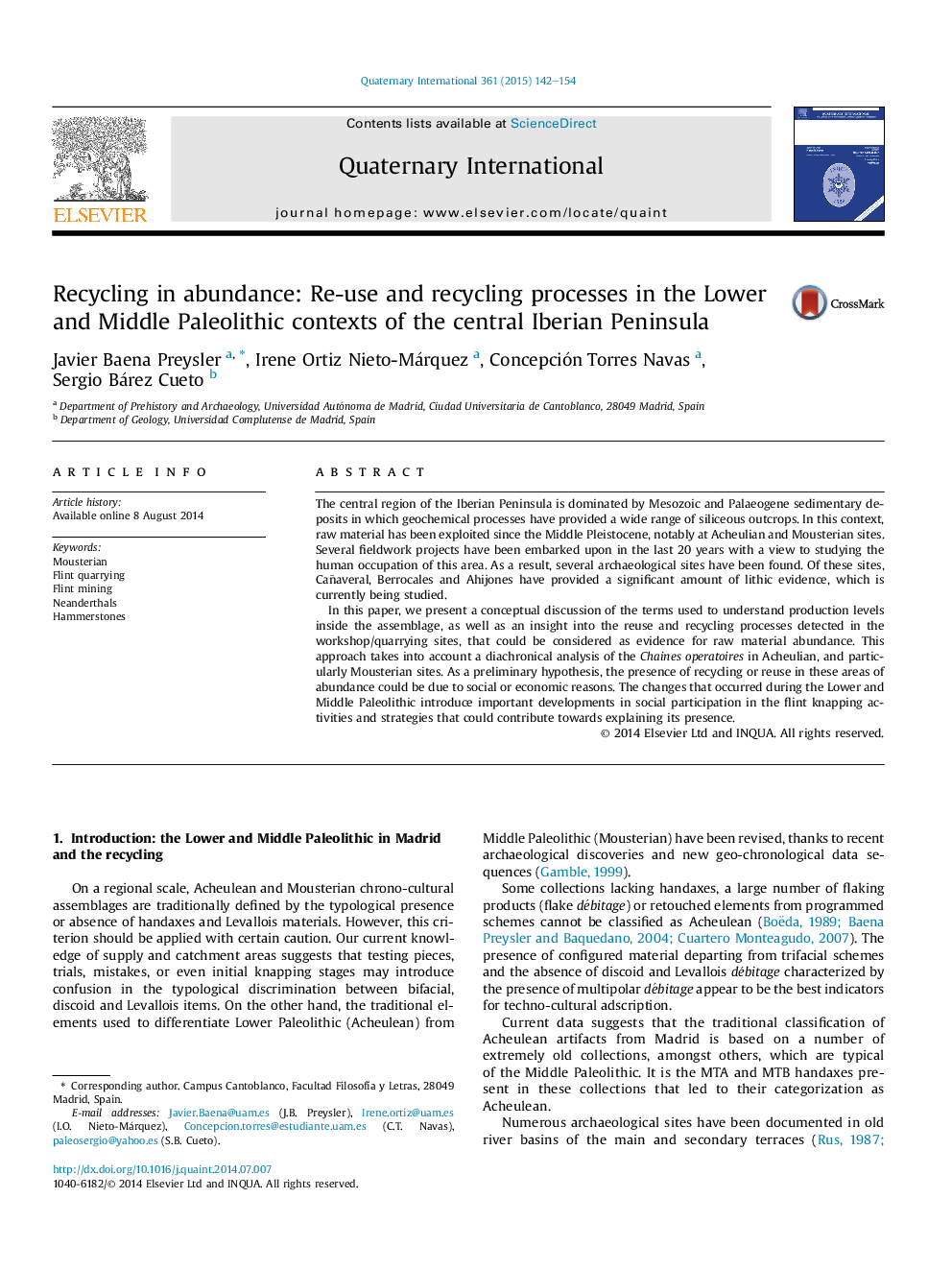| Article ID | Journal | Published Year | Pages | File Type |
|---|---|---|---|---|
| 1040928 | Quaternary International | 2015 | 13 Pages |
The central region of the Iberian Peninsula is dominated by Mesozoic and Palaeogene sedimentary deposits in which geochemical processes have provided a wide range of siliceous outcrops. In this context, raw material has been exploited since the Middle Pleistocene, notably at Acheulian and Mousterian sites. Several fieldwork projects have been embarked upon in the last 20 years with a view to studying the human occupation of this area. As a result, several archaeological sites have been found. Of these sites, Cañaveral, Berrocales and Ahijones have provided a significant amount of lithic evidence, which is currently being studied.In this paper, we present a conceptual discussion of the terms used to understand production levels inside the assemblage, as well as an insight into the reuse and recycling processes detected in the workshop/quarrying sites, that could be considered as evidence for raw material abundance. This approach takes into account a diachronical analysis of the Chaines operatoires in Acheulian, and particularly Mousterian sites. As a preliminary hypothesis, the presence of recycling or reuse in these areas of abundance could be due to social or economic reasons. The changes that occurred during the Lower and Middle Paleolithic introduce important developments in social participation in the flint knapping activities and strategies that could contribute towards explaining its presence.
